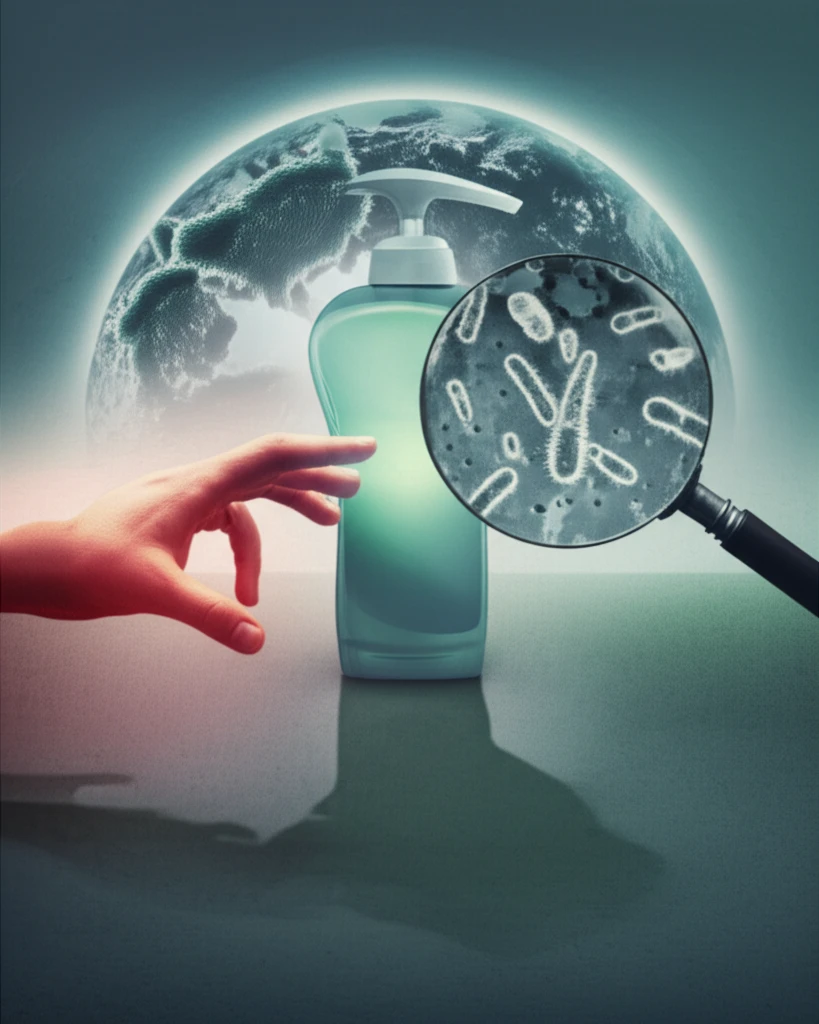
Can Triclosan Make Antibiotics Useless? The Hidden Threat in Your Everyday Products
"New research reveals how triclosan adaptation boosts antibiotic resistance in E. coli, posing a significant risk to public health. Learn what you can do to protect yourself."
In an era where superbugs are becoming increasingly common, the effectiveness of our antibiotics is under constant threat. One silent contributor to this crisis might be lurking in your bathroom cabinet: triclosan. This antibacterial agent, once celebrated for its germ-fighting abilities, is now under scrutiny for its potential to accelerate antibiotic resistance.
Triclosan, a synthetic chemical, is widely used in personal care products like soaps, toothpaste, cosmetics, and even acne creams. Its purpose? To kill bacteria. However, a recent study sheds light on a concerning side effect: prolonged exposure to triclosan can make bacteria, particularly Escherichia coli (E. coli), more resistant to antibiotics.
This article explores the implications of triclosan adaptation on antibiotic resistance. By examining the findings of a groundbreaking study, we will delve into how triclosan changes the properties of bacterial membranes, enhances efflux mechanisms, and ultimately reduces the effectiveness of crucial antimicrobial drugs. Understanding these mechanisms is the first step in mitigating the risks and preserving the power of antibiotics for future generations.
How Does Triclosan Lead to Antibiotic Resistance?

The study, conducted by researchers at Tanta University in Egypt, investigated the impact of triclosan adaptation on E. coli isolates. The team exposed E. coli to gradually increasing, sub-lethal concentrations of triclosan, mimicking the real-world scenario of bacteria encountering low levels of the antibacterial agent over time. The results were alarming: E. coli isolates adapted to triclosan showed increased resistance to multiple antibiotics.
- Changes in Membrane Properties: Triclosan adaptation alters the bacterial cell membrane, making it less permeable to both triclosan and antibiotics. This reduced permeability prevents these agents from entering the cell and attacking their targets.
- Enhanced Efflux Mechanisms: Bacteria possess efflux pumps, which are protein structures that actively pump out harmful substances, including antibiotics. Triclosan exposure enhances the activity of these efflux pumps, allowing bacteria to expel antibiotics more efficiently.
- Membrane Depolarization: The study found that triclosan adaptation leads to membrane depolarization, further reducing the effectiveness of antibiotics.
What Can You Do?
The findings of this study highlight the urgent need for responsible triclosan use and stricter regulations. While completely eliminating triclosan exposure might be challenging, here are practical steps you can take to minimize your risk and protect your community:<ul><li><b>Read Labels Carefully:</b> Be vigilant about reading labels on personal care products. Choose triclosan-free options whenever possible.</li><li><b>Opt for Simple Soaps:</b> Regular soap and water are highly effective at killing germs. There's no need to use antibacterial soaps containing triclosan.</li><li><b>Advocate for Change:</b> Support policies that promote the responsible use of antimicrobials and encourage companies to phase out triclosan in their products.</li></ul>By taking these proactive steps, you can reduce selective pressure, slow the spread of antibiotic resistance, and safeguard the effectiveness of life-saving medications.
